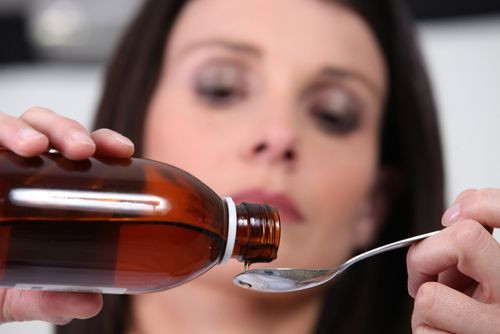Teaspoons Or Tablespoons? The Dangers Of Parents Medicating Their Kids Without The Metric System

If Gerald Ford had gotten his way maybe this wouldn’t be happening. The American Academy of Pediatrics has just published a study that found 40 percent of parents incorrectly dosed their children’s medication, and researchers are implicating teaspoons and tablespoons as culprits.
Today, there are three countries who don’t use the metric system: Libya, Myanmar, and the United States. We had every intention of doing so, with President Ford’s 1975 signing of the Metric Conversion Act. But Ford’s grand idea of assembling a United States Metric Board (USMB) eventually fizzled out by the late 1980s. Attempts to standardize the metric system in the U.S. regressed back to old habits of using customary units. And now, in a brilliant display of stubborn compromise, manufacturers must include both units on their labels, though the public remains free to choose how to measure.
It’s a choice the AAP frowns upon, as parents tend to confuse measurements that are imprecise or otherwise look similar. If they’re told to give their child a tsp. of medicine and mistake it for a tbsp., they end up giving the child three times the recommended dosage — 15 milliliters over five. Driving your car at 60 miles per hour or buying fabric at $2 per yard may not do much harm, but the stakes are somewhat higher for doctors who need to keep people alive.
Pediatrician Dr. Jennifer Shu told CNN that she won’t prescribe medications by any other standard than the metric system. “If I give a sample of a liquid medication in my office, I also give a syringe and show the parent where the marking is for the dose,” she said. By having each doctor in her practice prescribe the same way, using the same system, parents should have no doubt how much to give.
Teaspoons and tablespoons are the largest offenders. Parents in the study who used ordinary kitchen spoons to measure out their kids’ medicine made twice the errors as parents using milliliter devices only (42.5 percent vs 27.6 percent). The same parents made measurement mistakes roughly 40 percent of the time.
Metric units don’t only eliminate the hassle of spoons, the researchers argue. They also eliminate the language barrier. Numbers are understood by everyone, and the sooner parents of foreign backgrounds can adopt metric standards the quicker their kids can get better. In addition, the AAP believes a standardized system could reduce mix-ups between the U.S. and foreign suppliers as well as minimize the number of calls to poison control centers due to parental overdose, of which there are more than 10,000 each year.
According to the study, doctors’ offices across the country could improve the safety of their young patients by first intervening with how parents deliver medication. The best systems to use are those that everyone respects and finds legitimate. Such is the case with educational systems and social etiquette. Kitchen tools, however, may be best left to the art of cooking. The science of medicine is too precise to eyeball.
Source: Yin H, Dreyer B, Ugboaja D, et al. Unit of Measurement Used and Parent Medication Dosing Errors. Pediatrics. 2014.
Published by Medicaldaily.com



























